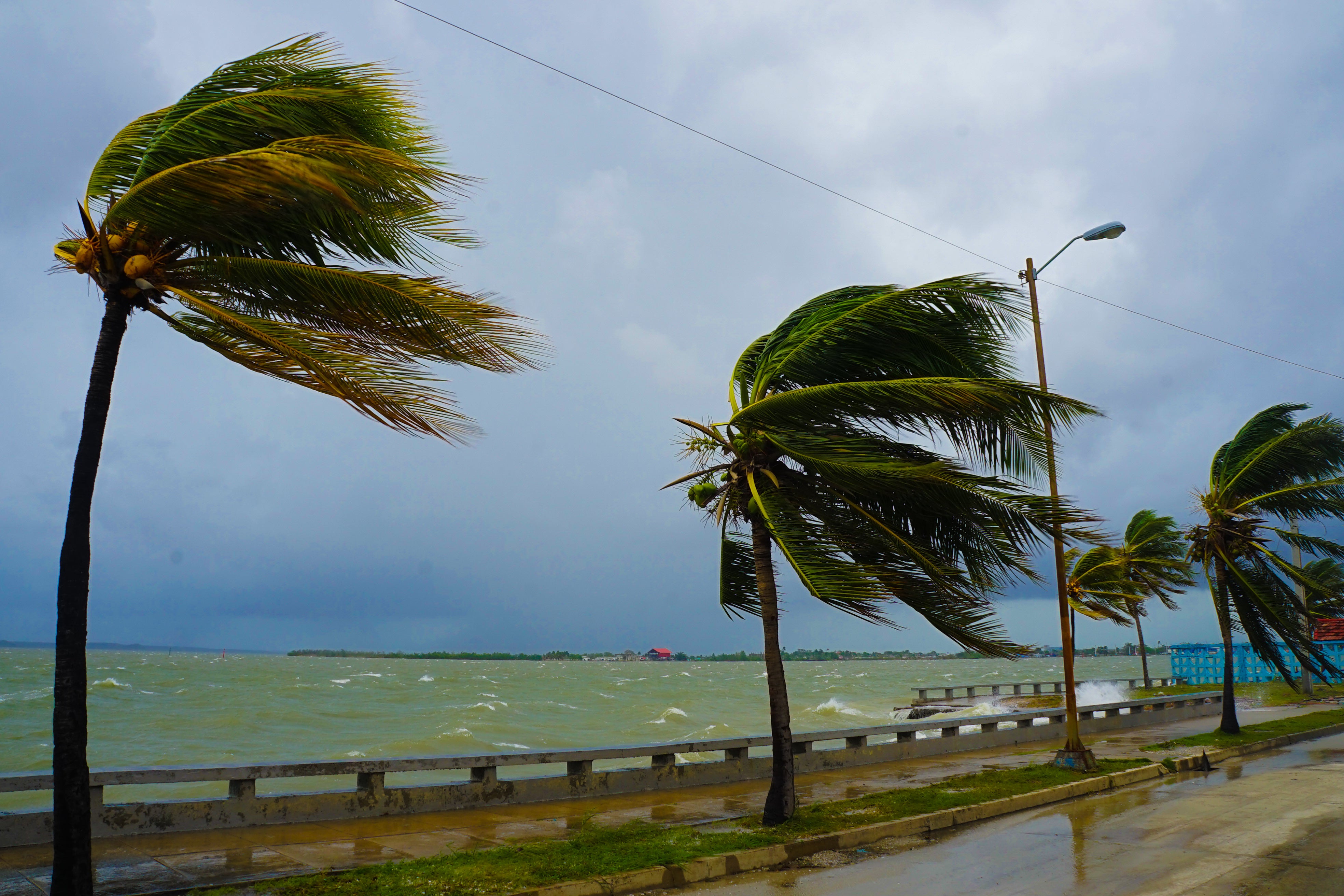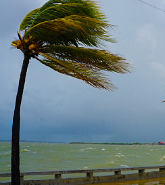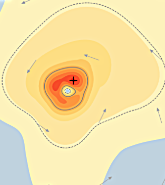NEWARK, CA – July 15, 2024 – Moody’s RMS™ Event Response estimates that U.S. insured losses from Hurricane Beryl will likely fall between US$2.5 billion to US$4.5 billion, and represent insured losses associated with wind, storm surge, and precipitation-induced flooding. Losses to the National Flood Insurance Program (NFIP) from this event are estimated to be less than US$300 million.
Total insured loss estimates for Hurricane Beryl (US$ billions) including post-event loss amplification and non-modeled sources of loss are:
|
|
Wind (incl. coverage leakage)
|
Storm Surge (excl. NFIP)
|
Inland Flood (excl. NFIP)
|
Total (excl. NFIP)
|
Best Estimate
|
|
Private Market Insured Loss
(US$ billions)
|
2.3 to 4.2
|
0.1 to 0.2
|
~0.1
|
2.5 to 4.5
|
3.7
|
Wind and storm surge components for this industry-insured loss estimate are based on an analysis of ensemble footprints in Moody’s RMS Version 23 North Atlantic Hurricane Models, using reconstructions of Beryl’s hazard to capture uncertainties surrounding observed wind and storm surge. Similarly, the inland flood component of the loss estimate was derived using Version 1.2 of Moody’s RMS U.S. Inland Flood HD Model.
For exposure, Moody’s RMS U.S. Hurricane and U.S. Private Flood industry exposure databases informed the private market loss estimates, while Moody’s view of NFIP policy-in-force data published by FEMA was used for the NFIP loss estimate.
Moody’s RMS Event Response team developed and validated the wind, storm surge, and inland flood reconstructions and corresponding loss estimates using public and privately available data. This included the extensive suite of observational data informing the Moody’s HWind real-time products, and wind station observations from an exclusive partnership with the Texas Tech University StickNet program.
Jeff Waters, Director, North Atlantic Hurricane Models, Moody’s, said: “Hurricane Beryl was yet another complex and impactful event across multiple fronts and regions. Parts of the Caribbean sustained catastrophic damage that will unfortunately take a long time to fully recover.”
“Beryl ran out of room to intensify in the Gulf of Mexico before making landfall in Texas, which lessened the impact on the (re)insurance market. Tracking inland, Beryl is certainly noteworthy as it maintained intensity to bring some of the strongest observed winds in recent history over the densely populated Houston Metro area.
“Texas building codes – while not as stringent as other states – should allow most structures to withstand the winds reported from Beryl, but with the region’s high exposure density, significant amounts of expected minor/moderate damage will contribute to the overall total insured losses.”
“Estimated losses reflect property damage and business interruption to residential, commercial, industrial, watercraft, and automobile lines of business, and consider sources of post-event loss amplification (PLA) and non-modeled sources of loss.”
Raj Vojjala, Managing Director, Model Development, Moody’s, commented: “In addition to wind and water modeled impacts from Beryl, numerous treefall-related damages, infrastructure washouts to roads and railways, and tornado-related damages were reported. Together with significant power outages (over two million at peak), all could exacerbate damage, prolong repairs and business interruption, and cause pockets of claims inflation.”
“After Hurricane Harvey in 2017, South Texas witnessed notable coverage leakage from inland flood on wind policies and litigation-related impacts, and to a much lesser degree, Beryl may also produce similar effects.”
“Wind will largely drive U.S. private market insured losses from Beryl, though storm surge and inland flood-related losses could contribute to higher proportions of insured losses, particularly in some of the worst-affected Texas counties, in non-coastal regions with significant NFIP take-up rates. Insured wind and NFIP losses will be driven by residential lines, while commercial and automobile lines will drive private market water losses, primarily in Texas.”
The second named storm, the first hurricane, and the first named storm to make landfall in the U.S. during this 2024 North Atlantic Hurricane Season, throughout its life cycle, Beryl broke numerous records, including:
- The easternmost hurricane in the tropical North Atlantic in June
- The strongest tropical cyclone on record in the North Atlantic in June
- The strongest hurricane on record to impact the southernmost Caribbean Windward Islands
- The earliest Category 5 major hurricane in the North Atlantic Basin on record
Landfalling as a Category 1 hurricane near Matagorda Bay, Texas on July 8, Beryl had maximum sustained winds of 80 miles per hour (130 kilometers per hour) and a central pressure of 979 hPa. The storm brought strong winds, storm surge, and inland flooding to coastal and interior areas of the central Texas coast – including the Houston Metro region. It then tracked northeast, weakened, and ultimately dissipated over the U.S. Great Lakes region on July 11, with several states impacted by severe weather, including tornadoes, and heavy rainfall causing flash flooding in some areas.
Before making landfall in the U.S., Beryl impacted Mexico and multiple Caribbean islands, including the Cayman Islands, Jamaica, and the Windward Islands. The storm had previously made landfall as a Category 2 hurricane near Tulum on Mexico’s Yucatán Peninsula on July 5.
On July 3, and into July 4, Beryl’s center passed offshore Jamaica’s southern coast as a Category 4 major hurricane, delivering hurricane-force winds, storm surge, and rain to the island. Beryl’s first landfall was as a Category 4 major hurricane over Grenada’s Carriacou Island on July 1, with widespread and significant damage across numerous Windward Islands.
Moody’s RMS Event Response estimates total non-U.S. insured losses from Hurricane Beryl will not exceed US$1.5 billion, with damages in the Caribbean, including Jamaica and the Windward Islands driving the majority of insured losses. Insured losses in Mexico are expected to remain low as Beryl’s track largely spared the densely-populated hotel and resort region of the Yucatán Peninsula.
Julie Serakos, Managing Director, Product Management, Moody’s, said: “We expect most insured losses from Beryl to be retained by primary insurers, and some economic losses, particularly in the Caribbean, to be aided by triggering parametric coverage in place.”
“Hurricane Beryl seemingly sets the tone for an expected active and potentially impactful North Atlantic Hurricane season. All (re)insurance value chain market segments need to prepare to monitor and respond to unfolding events, with the latest Moody’s RMS modeling tools and exposure datasets reflecting the most current and complete views of the hurricane risk landscape.”
About Moody’s
In a world shaped by increasingly interconnected risks, Moody’s data, insights, and innovative technologies help customers develop a holistic view of their world and unlock opportunities.
Moody’s shapes the world’s view of risk for insurers, reinsurers, financial services organizations, and the public sector, with Moody’s RMS models underlying the nearly US$2 trillion Property & Casualty industry. We empower organizations to evaluate and manage global risk from natural and man-made catastrophes, including hurricanes, earthquakes, floods, climate change, cyber, and pandemics.
With a rich history of experience in global markets and a diverse workforce in more than 40 countries, Moody’s gives customers the comprehensive perspective needed to act with confidence and thrive.
Visit Moody’s - Insurance Solutions to learn more and follow us on LinkedIn and X/Twitter.
END
The technology and data used in providing this information are based on the scientific data, mathematical and empirical models, and encoded experience of scientists and specialists. As with any model of physical systems, particularly those with low frequencies of occurrence and potentially high severity outcomes, the actual losses from catastrophic events may differ from the results of simulation analyses.
MOODY’S RMS™ EVENT RESPONSE SPECIFICALLY DISCLAIMS ANY AND ALL RESPONSIBILITIES, OBLIGATIONS, AND LIABILITY WITH RESPECT TO ANY DECISIONS OR ADVICE MADE OR GIVEN AS A RESULT OF THIS INFORMATION OR USE THEREOF, INCLUDING ALL WARRANTIES, WHETHER EXPRESS OR IMPLIED, INCLUDING BUT NOT LIMITED TO, WARRANTIES OF NON-INFRINGEMENT, MERCHANTABILITY AND FITNESS FOR A PARTICULAR PURPOSE. IN NO EVENT SHALL MOODY’S RMS (OR ITS PARENT, SUBSIDIARY, OR OTHER AFFILIATED COMPANIES) BE LIABLE FOR DIRECT, INDIRECT, SPECIAL, INCIDENTAL, OR CONSEQUENTIAL DAMAGES WITH RESPECT TO ANY DECISIONS OR ADVICE MADE OR GIVEN AS A RESULT OF THE CONTENTS OF THIS INFORMATION OR USE THEREOF.





